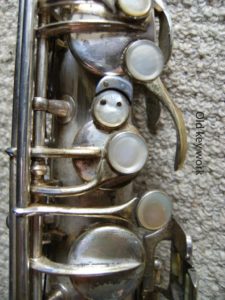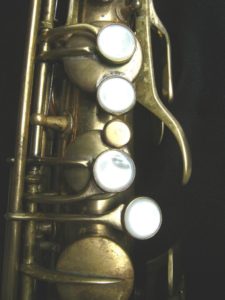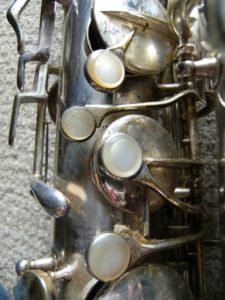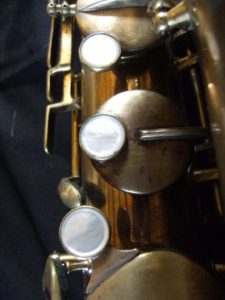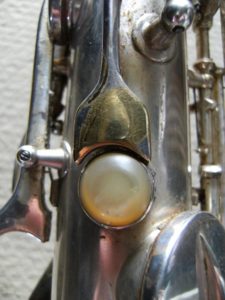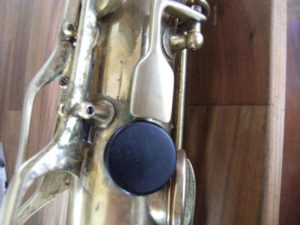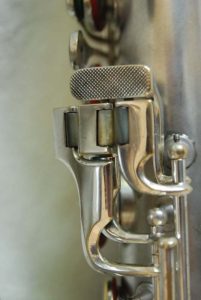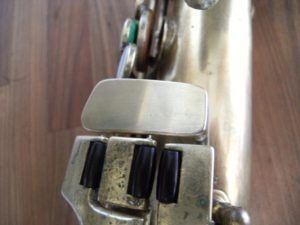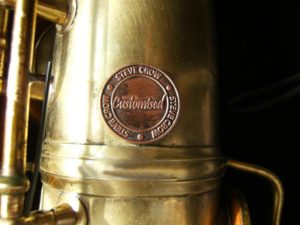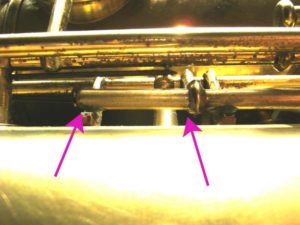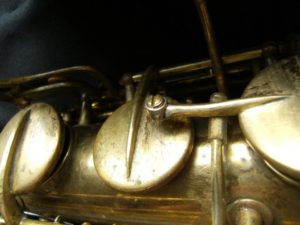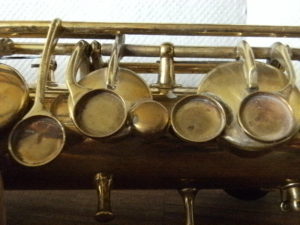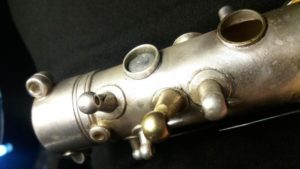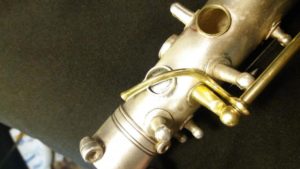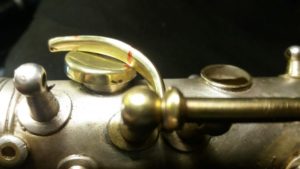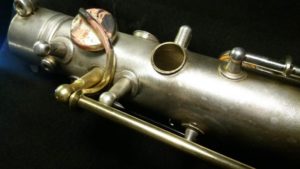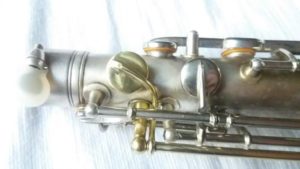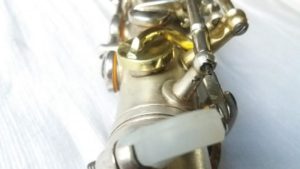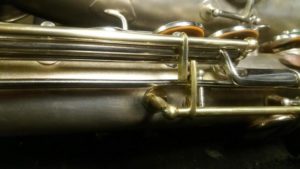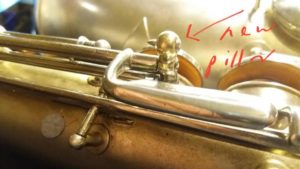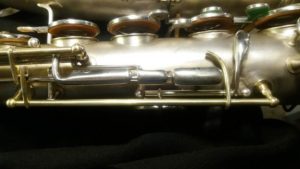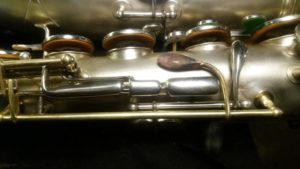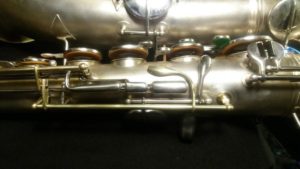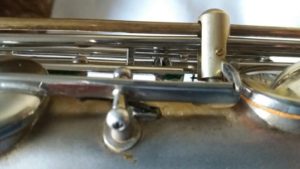Mobile 07899001099
email stevecrowsax@gmail.com
Background
The saxophone was developed in the 1840s by Adolphe Sax, a Belgian-born instrument-maker, flautist, and clarinetist working in Paris. While still working at his father’s instrument shop in Brussels, Sax began developing an instrument which had the projection of a brass instrument with the agility of a woodwind. Another priority was to invent an instrument which would overblow at the octave, unlike the clarinet, which rises in pitch by a twelfth when overblown; an instrument which overblew at the octave would have identical fingering for both registers.
My Projects
Conn Conversions
This is an original 1932 Conn New Wonder tenor saxophone that I converted for Paul Dunmall in 2009. Paul kindly let me loose on his Conn as an experiment. This was to be my first complete conversion and it could have gone very wrong! Happily it was a success… so here are a few pictures to show you what this conversion is all about. But first check out Paul playing his conversion on YouTube.
These next videos are players playing the Conn Conversion
Paul Dunmall
Ray Gelato
Matt London
Dave O’Higgins
The Conn Conversion
The project begins with a standard 1920/30s Conn tenor saxophone.
Firstly, I remove the G# and D# trill-key mechanisms as these can be troublesome and will be unnecessary when the action is improved. I also extend the heel of the F# key on the right hand to link it to the D key, as on modern horns.
Secondly, I remove all the touch-pieces and re-align them into a more Selmer-like position, bringing the Bis key into line. I also replace the G# touchpiece. The octave key and its thumbrest are also modernized. All these improvements combine to make the horn feel better under the fingers.
Finally, for comfort’s sake, the sling hook is moved further down the body, and the right-hand thumbrest repositioned closer to the keys, helping the horn to balance in the hands. Of course, this will never quite achieve the wonderful ergonomics of more modern horns, but it does make it much more playable, and modern horns don’t sound like these!
In the pictures below, you can see the various aspects of the conversion process.
Gilad Atzmon
I have been playing the Mark VI throughout my entire career. I didn’t even realise that there are saxophones out there that may compete with my beautiful vintage tenor. But then, last year I performed with Dean Masser. He had a beautiful sound, it was personal and romantic but huge. I noticed that he was blowing into an old horn. I was quick to learn that it was Conn 10M. Within a week I managed to put my hands on a nice Conn Tenor. I loved the sound but was somehow struggling with the ergonomics. I started to move erratically between my Mark VI and the 10M. I loved the sound of the 10M but wasn’t comfortable enough to make it into my one and only love.
But this 10M/Mark VI dilemma came to a dramatic end recently. One visit to Steve Crow has sorted me out for life. I am now playing the best sax on the planet. A 10M tube fitted with modern ergonomics. The minute Steve presented me his hybrid model, I realised that I wasn’t going to leave without this horn.
For the first time in my life I hear my horn producing that sound I was searching for my entire life. This happiness cannot be measured. It can hardly be reduced to words. So I better stop here.
Selmer MK6 Alto key restoration.
Conn New Wonder tenor adding high F sharp.
Moving the conversion on after 11 years a customer as asked me to make and fit a top F Sharp tonehole and key work.
These next few pictures show the stages of the work.
